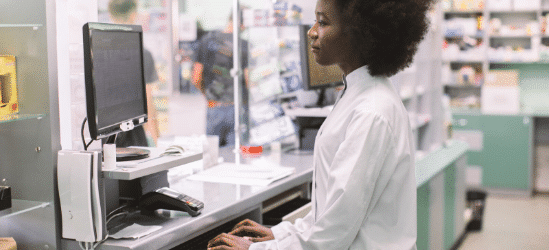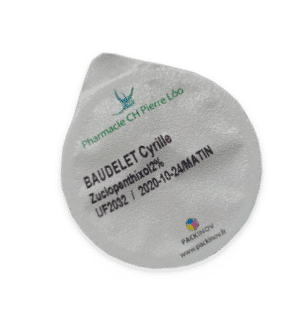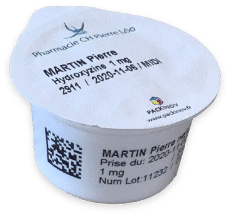Dispensing
As part of your pharmaceuticals businessYou want to set up a dose preparation for all drug forms, especially liquid forms.
You are looking for a reliable robot to strengthen securing the medication circuitsignificantly reduce risk of iatrogenic errorsgreatly improve traceability and facilitate compliance with 5B rules.
You wish to reduce your operating costs, optimize preparation times and improve the working conditions of your assistants and nurses.

Clear answers to your needs
The ADP-20L single-dose pharmaceutical dispensing robot NOODDIS is part of this approach. automation to meet all these expectations.
- It enables prepare simply and accurately single-dose cups of liquid oral medications.
- He limits sources of error in treatment administration.
- He frees up time for the benefit of patients.
- He no need for manual preparation by simplifying and reducing operators' workloads and responsibilities, and by limiting repetitive tasks that cause RSI.
- It reduces risk of drug loss by providing a simple solution to inventory management.
Perfectly suited to in-house pharmacies psychiatric, pediatric and geriatric hospitalsthe pharmaceutical preparation robot ADP-20L is also of interest to pharmacists which take into account patients from nursing homes, detention centers, etc.

Concrete benefits

fully integrated & connected

regular
for monitoring consumption

up to 1200 unit doses*/h (or 400 nominative doses/h)

dosing

easy to absorb & customized

by heat-sealing

from bottle to dose

reduced
A response to the Ministry of Health's objectives
Visit dispensing inappropriate treatment is frequent and cause tens of thousands of undesirable events every year in our plants hospital French including several fatalities.
Visit French Ministry of Health has set itself clear objectives:
- Reduce the frequency of iatrogenic events by 1/3 preventable serious adverse events (SAEs) during hospital stays
- Reduce the prevalence of drug iatrogenesis by 1/3 serious and avoidable hospitalization
- Reduce the number of deaths by 20 % with iatrogenesis as the main cause



